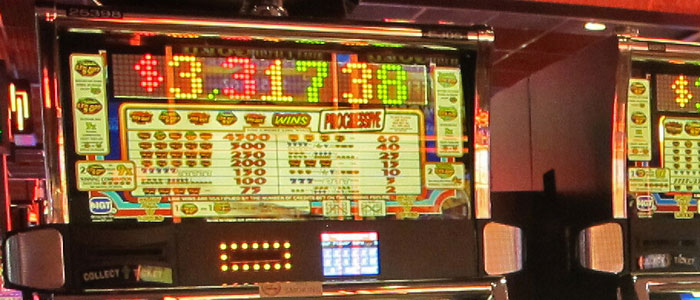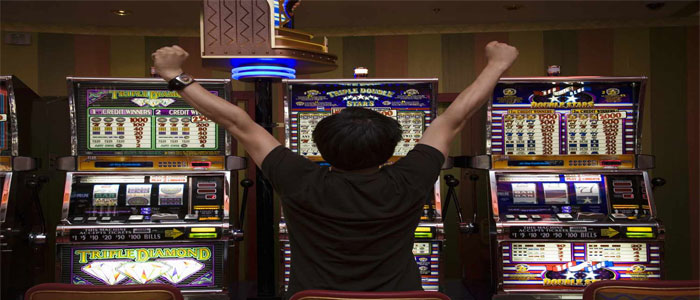Slot Online Agen Slot Gacor Terbukti
Slot gacor online memastikan kepada seluruh pemainnya mendapatkan keamanan dan kenyamanan ketika main. Para pemain bisa sangat leluasa dengan mendapatkan seluruh permainan slot gacor yang makin trending. Karena hasil dan keuntungan yang didapatkan ini sangat menggiurkan. Maka tak mengherankan jika kemudian slot game terus menjadi popular dan viral di Indonesia.
Akun Slot Gacor Pasti Menang Banyak
Di setiap permainan judi slot online, ada banyak yang bisa kamu dapatkan. Rtp slot gacor yang tinggi hingga 98% pada permainan-permainan yang disediakan, jackpot slot yang pastinya sangat menggetarkan para pemainnya ketika mendapatkan keuntungan itu. Masih banyak lagi pastinya dari agen slot terpercaya ini bisa kamu peroleh. Selain itu, minimal slot deposit dari agennya pun sangat murah meriah. Dengan begitu, kamu tidak akan mengeluarkan uang banyak sebagai modal slot yang kamu mainkan. Dari nilai deposit minimal hanya 5k saja, kamu bisa lebih leluasa memainkan seluruh game slot yang disediakan pada situs terpercaya gacor slot rtp tinggi.
Untuk memperoleh semua itu, pastinya kamu harus daftar member situs judi slot ternama. Dengan pendaftarannya itu, kamu akan dapat akun slot gacor yang bisa digunakan untuk login ke bandar slot terpercaya. Prosesnya sangat mudah sekali untuk mendaftar member game slot ini. Hanya dengan mengisi formulir daftarnya dengan data diri kamu yang benar dan lengkap. Jangan sampai ketika mengisi formulir itu, kamu melewatkan satu informasi yang diperlukan oleh agen bandar slot. Pasalnya, dari informasi kamu ini, tentu akan melancarkan proses transaksi dari slot game ini, seperti depo dan juga WD.
Berikutnya yang perlu kamu tahu, setelah daftar member slot game terpercaya, proses deposit untuk modal kamu bermain. Permainan slot gacor yang disediakan tidak memerlukan modal besar ketika main. Namun, dari bet kecil yang kamu pasang memungkinkan dirimu mendapatkan keuntungan besar yang sangat luar biasa. Kamu bisa proses depositnya ini lewat metode-metode pembayaran yang disediakan di agennya, seperti transfer bank yang mendukung transaksi ini, seperti bank BRI, BNI, BCA, dan Mandiri. Selanjutnya, jika ingin lebih praktis dan simple lagi, bisa kamu mencoba untuk memakai e-wallet seperti dana, gopay, ovo, dan link aja. Seluruh deposit yang kamu lakukan dengan metode apapun tentunya tidak dikenai potongan apapun. Dengan begitu, modal yang kamu dapat dan masuk ke saldo akun kamu sesuai dengan nilai yang telah kamu depositkan.
Daftar Agen Slot Gacor Provider Ternama
Semakin menyenangkan, kamu bermain judi slot gacor yang disajikan oleh situs slot ternama dan terbesar di Indonesia. Kamu bisa mendapatkan ragam slot online yang disediakan dengan rtp slot tertinggi. Tentunya, hal itu tidak akan membuat kamu jadi rungkad ketika memainkannya. Berikut bisa kamu simak beberapa game slot online paling favorit dan popular dimainkan.
-
Slot gacor pragmatic
Tak perlu kamu merasa bingung lagi apa yang ingin kamu pilih untuk dimainkan pada situs slot ternama ini. Slot gacor pragmatic play menghadirkan keseruan yang luar biasa dari permainan-permainannya. Banyak permainan dari pragmatic play ini telah memberikan keuntungan yang luar biasa bagi seluruh pemainnya.
-
Slot gacor joker gaming
Satu lagi yang bisa kamu dapatkan untuk main slot gacor yang menguntungkan. Joker gaming atau joker123 telah menjadikan sebuah wahana permainan slot paling menguntungkan. Di antara permainannya telah memberikan kemenangan yang luar biasa dan paten sekali. Kamu bisa coba keseruannya sekarang juga.








